My Journey as an Ally
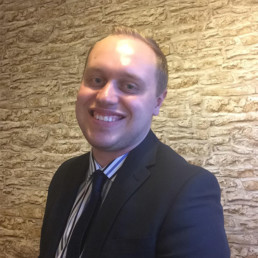
Written by Ben Hobbis
Teacher, Middle Leader and DSL. Founder of EdConnect and StepUpEd Networks.
I have been on a real journey as an ally. I have been on a journey as a champion for diversity, equity and inclusion. I’m not sure where this passion comes from. I am a heterosexual, white, able bodied man. I know I’ve had it easy compared to my colleagues from different backgrounds within the protected characteristics. I’m not sure where my drive or passion for this comes from. I think it comes out of my moral compass of wanting to help create a more equal and equitable society. I know I can’t change the world, but I know if I don’t play a part I won’t be standing by and living my values.
When I first came into education, I thought inclusion meant ensuring special needs were catered for, that we pushed our gifted and talented children and that we ensured our looked after children and those with medical conditions were cared for. I was naive to think that this was inclusion.
However, I am very fortunate to attend (and soon graduate) from a university, an initial teacher education provider that strongly embodies, embeds and sequences the themes of diversity, equity and inclusion throughout the three years of my Bachelor of Arts in Primary Education. Just to give you some context this is how it was broken down for me:
- First Year – an overview of child development, barriers to learning including SEND, more able, economic deprivation, and English as an additional language.
- Second Year – a whole module dedicated to special educational needs, disabilities, and inclusion; opportunity to complete a placement in a special school.
- Third Year – current issues in education module including sessions on Race, LGBT, Gender, mental health and wellbeing; opportunity to research any area of inclusion and diversity in our educational research module; CPD sessions supporting these topics; in our core module gender issues in STEM is explored.
- All Years – the opportunity to arrange our own placements in special schools, children’s hospitals, and other settings. Opportunity to explore diversity, equity and inclusion on placements.
I’ve spoken to others on similar courses who get the equivalent of a week (if that) to these topics. In some cases, a day. And in some cases, some of these topics are not addressed. As a result, we are doing a disservice to our trainee teachers, our early career teachers, our communities and ultimately our children.
In our current issues module, we produced a training resource on two areas of the module. I chose LGBT and Race. I consider myself to be an ally. To be attuned to the issues (particularly over the last year) that have affected the world. However, I considered, how would I discuss this in the classroom? How would I handle this? And the answer was I didn’t know. Therefore, I felt it my duty to focus my assignment on this. Whilst now having completed the assignment, I am by no means the expert and by no means this being the last piece of CPD I do on the subject; I am pleased to have been supported and encouraged to educate myself further by an institution valuing DEI.
As an ally, I will never fully understand, but I can try to and do everything I can to support others. I have a duty for the children and communities I serve to do so.
Supporting Women into a Career in Banking
At Deutsche Bank, we believe that diverse teams perform better. Different perspectives, experiences and backgrounds of our employees support better decision making. Gender plays a key role in this. But many companies still have a long way to go to achieve gender balance. Statistics show that women are underrepresented at senior levels in organisations across all 20 sectors of the economy.
Deutsche Bank is on a mission to help change this. With a new target of having women in 35% of leadership roles by 2025, the bank wants to attract more female talent into banking to help improve gender balance and close the gender pay gap. ithin Deutsche Bank, dbGO is the gender inclusion network, run entirely by a team of volunteers who come together to support women across the bank. Their mission is to promote gender diversity to build better business and strengthen inclusion at the bank.
dbGO has created a film as part of an outreach initiative for schools targeting 13 to 18 year old female students. In collaboration with Diverse Educators and the bank’s youth engagement programme, Born to Be, the film will be distributed to schools across the UK to help demystify banking and open the eyes of female students to the opportunities available.
Hoping to inspire the future generation, six female Deutsche Bank employees with different personal and educational backgrounds have shared their career stories in the film. They share their journeys from education to their first job, what they wanted to be when they left school and how they ended up in banking – spoiler alert – it wasn’t on anyone’s grand plan! The women, who are at different seniority levels at the bank, tell the audience candidly, what it’s like to be a woman in banking, the mentoring and support they have received and the opportunities available to progress your career.
The film showcases the different types of roles available inside a bank – including roles that you wouldn’t typically expect. From trading, marketing, technology, legal to risk management, there really is something for everyone, as one participant reveals.
The film can be previewed at a webinar for school teachers with a live Q&A on Monday 5th July – book to join us here or to stay in touch about the campaign here. Participants will be able to hear more from Deutsche Bank at the session about why they have created the film and why they feel it is important to be shown to female students in particular as they start to make decisions that can affect their future careers.
In October, as part of International Day of the Girl, the film will be streamed to schools across the UK for students to learn more about banking careers and have the chance to ask questions to female Deutsche Bank employees about their careers and career journeys.
For more information about getting involved with this careers resource please contact: hannah@diverseeducators.co.uk
For more information follow:
Twitter @dbCitizenship @DeutscheBank
LinkedIn: Deutsche-Bank
Young People on the Margins – GRT Young People
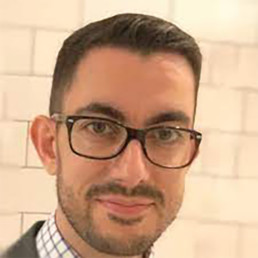
Written by David Weston
Co-CEO of Teacher Development Trust; Chair DfE CPD group; author, campaigner and speaker.
Last month, an article in The Times argued that Irish Travellers should no longer be recognised as an ethnic group in the UK, and that Traveller families who attempt to maintain traditional customs should have to assimilate into mainstream British culture. Gypsies, Roma and Travellers are ethnic groups recognised by UK law, each with distinct languages, traditions and cultural practices. Denying that they are ethnic groups not only erases these communities’ rich histories but downplays the racism they face.
In this blog, I argue that support for Gypsy, Roma and Traveller (GRT) pupils must start with recognition of the racism that they experience day to day. I’ll explain why I believe the discrimination that GRT communities face is relevant to education, and then finish with three key things schools and colleges can do to ensure that pupils are able to spend their time in education learning, rather than dealing with the effects of racism.
Before I joined the team at the Centre for Education and Youth, I ran an education advocacy project for GRT families across England. The discrimination that families I worked alongside faced was shocking, and was a factor in most of the difficult situations families encountered. Sometimes this was explicit, like the young person who was excluded for lashing out after being called racial slurs for weeks, and sometimes this was built into systems, like the family who couldn’t access transport to school, despite living on a site cut off from the local school by a motorway.
More recently, my colleague Ellie Mulcahy and I co-authored a chapter focussing on Gypsy, Roma and Traveller pupils’ experiences for CfEY’s recently published book ‘Young People on the Margins’. In our chapter we point out that while many GRT pupils excel in education, there are barriers to success that GRT families have little control over.
Mainstream society is often unfriendly towards GRT people; attitudes towards nomadic families are usually hostile, and families who have settled in ‘bricks and mortar’ housing also face offensive stereotypes and social exclusion. In 2017, a YouGov/The Traveller Movement poll found that:
- Just a third (34%) of UK adults consider Gypsies and Travellers to be ethnic groups.
- Less than half (41%) of UK parents would be happy for their child to go to a playdate at the home of a child who is a Gypsy or a Traveller.
Children are affected by these attitudes in the education system too.
Many families avoid officially identifying as GRT in order to reduce the likelihood of discrimination, and the current categories (Gypsy/Roma or Irish Traveller) used by the DfE do not match how some families identify, so it’s hard to gain a full picture of Gypsy, Roma and Traveller pupils’ outcomes. However, we do know that:
- Attainment for Gypsy, Roma and Traveller pupils is lower than other groups. In 2019/20, the average Attainment 8 score for Gypsy/Roma pupils was 23, and for Traveller pupils it was 32, in comparison to an average of 50 across all pupils.
- Exclusion rates are higher for these groups of pupils, with 21.26% of Gypsy and Roma pupils and 14.63% of Traveller pupils receiving fixed-period exclusions in 2018/19, compared to 5.36% of all pupils.
For some people, these statistics confirm racist beliefs that there is an inherent educational deficit in GRT communities. This is something we strongly reject. Decades of research show that it is racism, prejudice and a lack of inclusion that cause poor outcomes for GRT pupils.
One of the largest barriers to educational success for GRT young people is other people’s attitudes. In a 2019 report from Friends, Families and Travellers, 86% of GRT young people said that bullying was the biggest challenge for them in school. It is no wonder that engaging in education can be difficult for students in a society where two thirds of adults deny their identity, and over a third of people in their local community would avoid spending time with them, just because of their ethnicity.
Broader problems such as lack of access to quality housing and poor health can make working with schools even harder for parents. When families’ experiences are understood and discrimination is tackled, more pupils are able to leave school with an education that adequately prepares them for the future. Listening to the stories of success we share in our book chapter, we can see that effective support relies on:
- Tackling racism and discrimination in schools and colleges
- Building strong relationships between staff and families
- Allowing flexibility in school and college systems and processes where possible.
These themes are echoed throughout our book, in chapters on the experiences of young people with SEND, who are care experienced and who are homeless. The approaches that make education more accessible for GRT pupils can help bring all young people in from the margins.
LGBT+ inclusive education helps all young people, whether they are LGBT+ or not
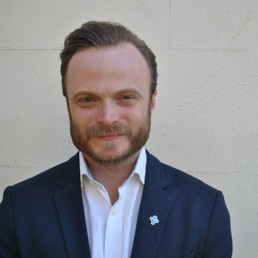
Written by Dominic Arnall
Chief Executive of Just Like Us, the LGBT+ young people's charity.
When Pride comes around, it can be easy to convince ourselves that so much has changed in terms of marriage and parental rights for adults, that it must be far easier growing up LGBT+ in 2021. Sadly, this is a common misconception and the research paints a much darker picture.
Just Like Us decided to commission independent research, conducted by Cibyl, to get a clear picture of how LGBT+ young people have been impacted, what is happening in terms of LGBT+ inclusive education, and how educators feel about implementing it.
When the pandemic began we expected that LGBT+ pupils may struggle more – perhaps stuck at home with unaccepting families, cut off from their usual support networks and struggling to find acceptance at school. What the independent research found was horrifying – LGBT+ young people are twice as likely to have contemplated suicide, and Black LGBT+ young people are three times more likely.
Our report, ‘Growing Up LGBT+’, surveyed almost 3,000 school pupils aged 11-18 (over 1,000 of whom were LGBT+) as well as more than 500 school staff. The results are very clear: LGBT+ young people are twice as likely to be worrying daily about their mental health and feeling lonely on a daily basis during lockdowns.
While the pandemic has of course been tough for everyone, including immense pressure on educators, it is devastating to see that LGBT+ young people are twice as likely to be struggling with their mental health and wellbeing on so many fronts – from depression to anxiety and panic attacks, there remains much work to be done.
LGBT+ school pupils are also twice as likely to have been bullied and just 21% told a teacher at school. Only 33% of LGBT+ pupils say there is a clear process for reporting anti-LGBT+ bullying in their school.
So what can we do? The good news is that the independent research found that pupils in schools where there is positive messaging about being LGBT+, pupils are less likely to have had suicidal thoughts and feelings – whether they are LGBT+ or not. The statistics are clear: all pupils benefit from a LGBT+ inclusion in schools.
74% of LGBT+ pupils who have never had positive messaging from their school about being LGBT+ have contemplated suicide but this drops to 65% when their school provides strong positive messaging about being LGBT+.
Non-LGBT+ pupils also benefit from LGBT+ inclusion in school – 33% of non-LGBT+ pupils who have never had positive messaging at school have contemplated suicide but this drops to 28% when there is strong positive messaging in their school.
A perhaps surprising finding from the independent research was also that the majority of all young people are very pro-trans. 84% of 11 to 18 year olds say they would proudly support a friend if they came out as transgender. 57% say they already have a friend who is trans. This really shows how important it is that we listen to young people’s voices and enable them to pave the way for positive change when it comes to LGBT+ equality.
Lastly, we are very concerned by the high proportion of LGBT+ educators who are facing challenges and fears about coming out at work and implementing LGBT+ inclusion in their schools. 40% of LGBT+ primary and secondary school staff are not out to their pupils.
Some might say that there’s no need to come out to pupils and there certainly should never be pressure on anyone to come out, but we are deeply worried about school staff who feel afraid to be themselves at work. No one should feel the need to hide who they are married to, who their families are or simply who they are in their jobs.
We also found that 31% of LGBT+ school staff say their colleagues or school board are a barrier to implementing LGBT+ inclusion in their school. The findings show there are still huge challenges that educators face in trying to bring about positive change and simply letting pupils know that: LGBT+ people exist and that’s OK.
As always, Just Like Us is here to support all educators – LGBT+ or not – with making schools safer and happier places for their pupils. You do not need to be an expert, it just takes a willingness to want to support LGBT+ young people who are so disproportionately struggling right now.
School Diversity Week is happening 21-25 June and it’s not too late to get involved. If you work in a primary school, secondary school or college, please sign up for free and we’ll send you a digital toolkit of resources for all key stages to help you celebrate.
Let’s create a world where LGBT+ young people can thrive.
Facing up to Privilege
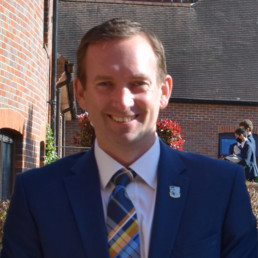
Written by Dan Colquhoun
Director of Sixth Form at Dr Challoner's Grammar School, 20/21 #BigLeadershipAdventure participant.
A personal view of confronting the advantages you’ve had and sharing this across the school community.
The past few weeks have been a time when I’ve been doing a huge amount of thinking and taking action on a lot of things relating to Diversity, Equity and Inclusion. The starting point was the brilliant session led by Hannah Wilson (@DiverseEd2020) and Adrian McLean (@Character_Guy) where we were all encouraged to actively engage in a range of deep-thinking tasks regarding what the key ideas meant to us as well as being encouraged to reflect on what our responses were to some challenging videos, pictures and ideas. What made this experience so powerful for me was the lack of judgement in the session alongside the feeling of psychological safety which enabled me to be honest with myself, and others, about my relative naivety with some of the issues raised.
The idea that particularly chimed with me was around Privilege. Having heard this bandied around previously I have to admit that I found it a word with many negative connotations – akin to spoilt, selfish, arrogant… I knew that I’d been fortunate in my upbringing: a loving, stable family; good school; various opportunities etc. but the idea of seeing myself as privileged didn’t sit well with me and I felt it was more suitable for those in the very highest echelons of wealth.
The video that we were shown of the race for $100 (here) where a range of statements were read out and if they applied to the individual (e.g. had a father figure in home, never worried where the next meal will come from etc.) they get to take two paces forward. After 10 statements the difference in starting position is massive, but as the video states: ‘where you are has nothing to do with anything you’ve done’.
I have watched this a number of times now, and it still causes a very emotional reaction in me. How can I not have realised just how fortunate – how PRIVILEGED – I’ve been all of these years? Having now shared this video with our SLT, my Sixth Form Team as well as with our team of Senior School Officials in both Y12 and Y13, it has been fascinating to listen to their responses and the different aspects that they pick up on. The extra large steps that people are trying to take to get any little additional advantage, the strong link between race and starting position, the importance for those at the front to turn around otherwise they don’t realise quite how far ahead they are of everyone else, and the incredible, powerful, way that many of those at the back still give their absolute best in the race. It gets me every time.
So, do students leave our school realising the extent of their privilege?
At the moment the answer for the vast majority would have to be a resounding no. They attend a selective school in an affluent town in the commuter belt and this bubble that they live in means that they are not exposed to the full breadth of society. They often end up comparing themselves to their, similarly privileged, peers or others in independent schools (the few who are “ahead” of them in the race of privilege) and actually convincing themselves that they’re relatively disadvantaged. Finding ways to encourage them to see themselves within the bigger picture, to take a more global view, is going to be really important.
For some students this can come from when they head to university and mix with a wider, more diverse, group of people. At reunion events it is a regular comment: “I just thought that all schools were like ours until I started speaking to friends at university.” This leads to increased gratitude and awareness of their privilege from attending our school, however it doesn’t suggest that they really understand the depth of privilege from across all aspects of their life that has put them in the position that they are in.
To me it is so powerful to think of what they could achieve if they do have this awareness of their privilege and the moral duty that comes with it to use it to help others who haven’t had the same level of advantage. Equity vs Equality.
So what has happened since this experience of seeing with fresh eyes?
Back in my school I initially shared my key learnings with my SLT colleagues. This led to some really fruitful discussions and we now have DEI as one of our two key school targets for the coming academic year. Sharing thoughts with a number of different teams of staff and students has been amazing and the quality of engagement and contributions at all of these has been so brilliant to see. It is as though everyone is desperate to talk about it, but often doesn’t feel confident enough to always say what they want to. To ask the questions. To simply say they don’t know. By sharing my vulnerability and recent journey has had a very positive impact on the atmosphere in these sessions and allowed people to feel safe and talk openly. ‘Getting comfortable with being uncomfortable.’
I have also had a number of discussions with my team in the Sixth Form about what this all means to us, and what are the key aspects for us to work on with the students. We have also started to make things more visible to students with: posters from Bold Voices around the school; names and email addresses of who to contact if a student has any concerns; policies more visible; a standing agenda item in our meetings; sharing of interesting articles and webinars.
What does the future hold?
We have arranged sessions in a couple of weeks’ time (once Y13s have got their final assessments out of the way), where all interested students are invited into school for two hours, to share their feelings regarding Sexual Harassment, Sexual Abuse and Consent. We’re initially going to have these meetings split by gender to encourage open sharing of what is the reality of things at the moment. We will then see what people are happy to share more widely and capture the honest views of our Sixth Form students as well as thoughts on how we could proceed. Involving the whole school community, and particularly the students, is going to be key in shaping how we move forwards.
Getting all staff on board is vital and we have very successfully embedded positive attitudes towards Mental Health across the school having focussed on working with staff first and then students. I see this as an important path to follow with DEI too: every teacher needs to have the space to engage with the issues themselves before we can expect them to start working with students. We cannot allow any teacher to remain unconsciously incompetent. ‘Doing the inner work before you do the outer work.’
As a school we pride ourselves in sending out well-rounded students prepared to make a positive impact in the world. We must do everything we can to ensure that this encompasses awareness of their individual level of privilege and this is going to be a key aspect for us to get right for the future. I’m excited for what lies ahead!
Antiracism through Opportunity
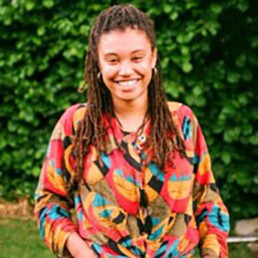
Written by Cassie Cramer
Real World Learning Programme Manager at School 21 in Newham, London
How School 21 approaches work experience through and antiracist lens
School 21 is a place that has always strived to provide opportunities for our diverse young people to succeed in the 21st century. Recently, it has been made clear that success by our definition requires taking actions to identify and act against racial inequality both inside and outside the classroom. In 2020, School 21 has made a concerted effort to promote equity, inclusion and diversity within our community. Through various initiatives, such as diversifying our curriculum, creating more inclusive recruitment processes, and the formation of an antiracism working group, we are doing what we can to create a thoroughly antiracist organisation. There are, however, some things School 21 has done for some time that in unexpected ways contribute to our newly articulated antiracist agenda. One of these things is the development and implementation of the Real World Learning Programme.
What is Real World Learning?
The Real World Learning Programme was started in 2015 as a reimagining of work experience. It provides both students and their host workplace with something that is more meaningful and authentic than traditional work experience. At School 21 all Year 10 and Year 12 students take part in 1-2 projects with a partner organisation for 12-17 weeks. Students spend one afternoon each week out of the classroom and in the real world, where they work in teams to solve problems for their host organization. Students take the skills they have developed through project-based learning in the classroom, and apply them to real life projects in the working world. Students come away with a tangible product, a variety of transferable skills, and a totally novel experience which can significantly impact their futures. Real World Learning at School 21 brings students and the professional world together in a meaningful way and raises aspirations of students, while widening the perspectives of employers.
An opportunity to build a network
Some students work with carpenters to make new chairs for our school. Others work with international financial institutions. From local primary schools to world renowned publishing houses, we work hard to provide students access to opportunities that are too often reserved for those with connections and privilege. The phrase, ‘It’s not what you know, but who you know’ has continually been proven true on small scales and large. Work experience, something that for many is relatively inconsequential, has the potential to create the opportunity for students to start a professional network. This provides marginalised young people the chance at the kind of network their more privileged peers may have through parents, private institutions or their school’s alumni. By simply giving students the chance to show their best selves, through an elongated and scaffolded work experience programme, we are in a very small way working to create a more equitable society.
Exposure goes both ways
The Real World Learning Programme strives to get our students out of the bubbles they are so accustomed to. It exposes them to careers, locations and individuals that they may never come across in their day to day lives. It is not, however, only the students whose boundaries are pushed. The bubbles that many corporations and organisations function in looks very different from our students’ bubbles, but they are bubbles nonetheless. By putting our students in white dominated spaces – like in the sky scrapers of Canary Wharf – you are not only raising their aspirations, but you are demonstrating what young, diverse people of colour from East London are capable of. The exposure that the programme offers, especially as it is over a significant period of time, works to confront implicit bias and racist stereotypes. It puts young ethnically diverse people in boardrooms and demands their thoughts are considered.
Many projects that our students have worked on explicitly seek to rectify racism in the workplace. We’ve had students working at the Ministry of Justice create a training video which sought to help employees identify and avoid implicit bias based on race and gender. Students have worked with the Metropolitan Police to create campaigns which aimed to ease tensions between young East Londoners and police officers who work in the area. HSBC has had our students reimagine their hiring processes, so that they are more attractive employers to a diverse pool of candidates. It is not only students who work on projects about diversity and inclusion in the workplace who contribute through Real World Learning to School 21’s antiracist agenda. Every student who completes the programme and can therefore see their future selves in positions of influence is a tiny rebellion against the white hegemonic structures that underlie so many industries.
Representation matters
Committing a total of 8.5 entire school days to work experience is not the only way to create a careers programme that is actively anti-racist. It starts with not limiting your students, and reflecting on your assumption of their capabilities. I’ve seen some of our most vulnerable students who struggle in a classroom environment do their work when they put on a suit and play the role of consultant. If they never get the chance to be in these scenarios, how will they know they deserve to be? Representation is also something that is so important in careers education. If students don’t have the time to form relationships with professionals, it is vital that they are exposed to professionals that they can relate to. If every solicitor or CEO you meet is white, it is hard not to jump to conclusions about the prerequisites for these sorts of careers. Sometimes interactions with professionals must be fleeting, but for them to be impactful there has to be some common ground and it is always worth the effort to find someone who can relate to students.
Looking at the big picture
The Real World Learning Programme is by no means perfect. Sometimes students get fired, employers end up frustrated and projects don’t get completed. The quality of projects are not always up to our standards, and students sometimes misbehave. These things seem insignificant though, if you think of the bigger picture. We unfortunately live in a society that is segregated. Race, class, wealth and other factors limit the movement of individuals in their professional lives. Work experience can be seen as an exchange of sorts, exposing students to foreign situations, and exposing employers to the talent, spark and ingenuity that is being nurtured in a place like a state school in Stratford, East London. We believe our students are capable of making real and lasting contributions to the companies they work with, and while they don’t always complete their brief, or win their pitch, they do always leave a mark on those they interact with.
We can, and should, think about work experience as an opportunity for students to experience the real world and gain valuable skills. This does not, however, have to be the sole purpose of it. By providing students with opportunities for their voices to be heard, and their opinions valued, the Real World Learning Programme is creating space for marginalised individuals to make their mark on institutions that have ignored them for too long. It allows students to see themselves as equals in a room of professionals who often have had a very different lived experience. Giving these opportunities to students, and supporting them to use their agency is an antiracist practice that more schools should be empowered to provide. I’d urge any enrichment manager or careers leader in a school to think about what opportunities the most privileged students have access to, and how this allows them to develop skills for the real world. It is absolutely possible that all students receive opportunities to develop those same skills while simultaneously raising aspirations and disproving racist assumptions. Work experience can be a vessel through which we don’t just acknowledge racial inequality, but actively empower our students to dismantle it from the inside.
Prepare students for the world, and the world for our students
Work experience is many things. It can be a taste of independence, a rude awakening, a rite of passage or a formative experience. At School 21, we also see it as a chance to promote equity and spark change that reaches far beyond our school walls. Through Real World Learning students can push their own agendas, and let organisations big and small know what matters to them. They can pave the way for others from similar backgrounds. They can show professionals that young people of colour can disrupt the status quo and contribute just as much as those who society privileges over them. They can see themselves as someone important, capable and respectable in a world that paints them as the opposite. If we see work experience as a chance to prepare our students for the working world, but also prepare the world for our students, we can do our part as educators to dismantle the systemic racism that is still rampant in workplaces and in society.
My Journey to Belonging
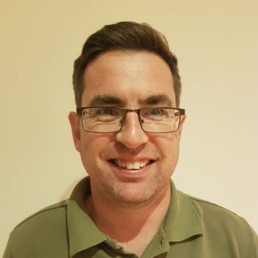
Written by Meirion Lewis
Assistant Principal at UAE Southbank, South London and #BigLeadershipAdventure participant.
A few weeks ago I was participating in a fantastic Diversity, Equity and Inclusion (DEI) session by Adrian McLean (@character_guy) and Hannah Wilson (@ethical_leader) as part of the Big Leadership Adventure by @_bigeducation and we were challenged to write a blog. I have to admit to having become an avid blog reader over the past few years due to delving into the twittersphere but have always found the thought of writing one myself as an utterly terrifying experience. Who on earth would want to read my inane ramblings when there are so many incisive, phenomenal musers and blog authors currently out there. I definitely don’t feel like I belong in that sphere but the challenge was there and began worming its way into my brain. The biggest issue was what on earth I would write my first blog on. I have been reading Brene Brown’s ‘Braving the Wilderness’ recently and this idea of ‘belonging’, what it means to belong and the importance (or not) of belonging to something really resonated with me and chimed with my growing discomfort of seeing Edutwitter becoming more and more tribal. Massive thanks also has to go to my wonderful colleague and friend Hannah Dalton (@DoddsyInit) for her feedback and suggestion that I turn this blog into a trilogy (what have I let myself in for). So here goes nothing…
What does it mean to ‘belong’?
The Oxford English dictionary defines belonging as ‘the feeling of being comfortable and happy in a particular situation or with a particular group of people’. Sounds simple enough but how easy is it to feel like you truly belong somewhere and is it actually that important in the grand scheme of things?
To put this in some sort of personal context, I have suffered from massive ‘imposter syndrome’ for most of my teaching career and reflecting back on the past 20 odd years, it has definitely affected my sense of belonging, and as a result, my self esteem and ability to do my job at times. I didn’t exactly fall into teaching but it was never part of my career plans growing up. My dad was a Deputy Head and, whilst he loved his job, I could see how hard he worked and thought it looked like way too much effort for me. However, a girl I fancied in Uni was working in a youth club on the weekends so I ended up doing the same. Whilst the relationship was short lived, the desire to combine my love of Science along with the real buzz I got from working with the teenagers from the estates of Cardiff propelled me into applying for a PGCE (plus, if you had seen how bad I was at Lab work, it was obvious that a career in Biochemical research was never going to work!). I was pretty driven in the early days to both do the best by my students and move up the responsibility ladder and I definitely felt like I belonged, both in the profession and in the different schools I worked in.
After 8 years, I found myself as Head of Science in a great school and that’s when the imposter syndrome hit me, and hit me hard. I constantly questioned myself and whether I belonged in the role and in such a successful school. It even got to the point where I was questioning whether I belonged in the teaching profession at all. Looking back now with a (relatively) dispassionate eye, I think I was a pretty decent HoD. Results improved (from a fairly high starting point), retention into 6th Form classes increased significantly but could I have done better – most definitely. I could, and should, have learnt more from my mistakes, been a more reflective leader and listened to my staff more but I was so preoccupied with the issue of personal belonging and all the baggage that went with it that it clouded my ability to think clearly at times.
This feeling of not belonging in leadership dogged me for the next decade and it is not until the last year or so that I have started to shake it off (I suspect it will never completely disappear and that is probably not a bad thing as it provides a critical lens to be self reflective through). What changed to allow me to begin to move on? In its simplest form, I rediscovered my values and began to truly understand what sort of leader I wanted to be. This has not been easy and I can’t honestly say I made a conscious decision to go on this journey but it has happened nonetheless. It comes down to a combination of factors but the main ones are:
- I stumbled upon a school that is full of people that share my values (although I didn’t realise this when I started).
- I have colleagues that have shown me, by their actions, the importance of developing yourself as a leader and that it is ok, normal even, not to have the answers to everything but that you should be striving to constantly reflect and improve. They have shown me that being clear about what you believe in and living your values out in your everyday life are probably the most important things you can do. This may sound obvious to you, dear reader, but it hasn’t always been to me.
- I have found a group of people through ‘Big Education’ that I admire beyond words and am privileged to be able to learn and grow with them over our two year Leadership Adventure and, hopefully, beyond. I definitely still feel imposter syndrome when I am with them!
Brene Brown talks about belonging in the following way: ‘belonging is about being accepted for you… if I get to be me, I belong. If I have to be like you then I fit in’. That encapsulates where I am in my journey perfectly – I now get to be me, so I belong.
Part 2 of this blog series will look at the pitfalls of belonging and Part 3 will discuss why it is important for schools to foster a sense of belonging amongst their students and how they can go about doing this. I need to actually get around to writing them now!
Developing an Anti-racist Curriculum
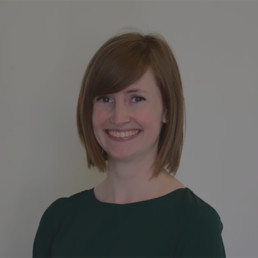
Written by Louise Holyoak
Head of Geography (Co Leader of Humanities) at School 21 in Newham, London.
Reflecting on the concepts of ‘tokenism’, ‘single story’ and ‘the Other’
At School 21, we are thinking deeply about diversity, equity and inclusion. This is multi-faceted, complicated and often difficult and uncomfortable work. We hope to share much of what we are doing over the coming months.
One of the many areas of focus is, of course, our curriculum. On an INSET day in January, we dedicated a whole day to explore diversity in our curriculum. One way to develop an anti-racist curriculum is to consider the concepts of ‘tokenism’, ‘single story’ and ‘the Other’ and reflect on how these may appear.
Here are some ideas, concepts and questions we used to help refine our curriculum offer.
Tokenism
Is the practice of making a superficial effort to include a diverse range of stories or representation within a lesson or scheme of work. The resultant activities are likely to be presented out of context, lacking in significance and at worst, can perpetuate stereotypes about particular groups.
An example of this in the classroom would be to mention the Ivory Bangle Lady in a lesson about the Romans without any context and failing to explain how she is significant in our understanding of a diverse, globalised Roman Britain.
Avoiding tokenism
- Are diverse stories woven into your curriculum plans, or are they considered an additional extra?
- Are diverse stories taught inconsistently across your team e.g. by one member of staff only?
- Are your current examples of diverse stories in your curriculum a result of requests to ‘do something for Black History Month’?
- When introducing aspects of other cultures into your curriculum, is this done in a superficial manner or is the historical and cultural context explained to students?
Single story
Is a concept to describe how a complex narrative may be simplified and repeated without nuance, leading to stereotypes being embedded in students’ minds. Chimamanda Ngozi Adichie explains how this happens and outlines the consequences of allowing single stories to go unchecked. An example of this would be to only teach about slums and poverty in India, without considering India’s rapid economic development and subsequent wide range of incomes and lifestyles.
Avoiding the single story
- What are the single stories represented in your curriculum?
- How can these be countered?
- Are these challenged within the topic or across topics?
- Are you actively working on developing your subject knowledge to add complexity and nuance to the claims made by outdated resources?
- Do you offer students the chance to critique the teaching materials used and the narrative they present?
The Other
Is the reductive action of labelling another person or group of people as existing outside social norms or power structures and/or lacking in agency in decisions relating to them. An example of this in the classroom would be to consider the indigenous tribes of the Amazon Rainforest as silent victims of deforestation who are to be pitied, without considering the activist work and campaigns carried out by this group.
Another example is to consider the difference between these two videos and how they represent charitable aid projects. Both are created by Oxfam, however the first represents aid recipients as the Other, as the experience of British charity donors is centred and narrated throughout. By contrast, this video centres local aid distributors and recipients by allowing them to speak throughout.
Avoiding the Other
- Who is being othered in your schemes of work?
- Are there elements of your curriculum that may inadvertently other your students?
- Do you assume a common point of view or cultural reference when teaching?
- Do the people being studied have a chance to speak for themselves, whether through visits or watching YouTube videos that centre people within the community?
Case study: Anti-racist curriculum development in Geography
At School 21, we are committed to creating a geography curriculum which ‘supports students and young people to develop the knowledge, critical thinking and imagination to foster anti-racist and environmentally just futures’ (Puttick and Murrey, 2020). Engaging with the concepts detailed above are necessary in order to achieve this aim, and we strive to do this across all of our schemes of work, from KS3 to GCSE and A-Level.
One way I have attempted to avoid tokenism is to build entire schemes of work around fertile questions which allow students to explore complex issues in depth. The first geography topic year 7 students studied this academic year was centred around the question ‘Why is Newham the most diverse borough in London?’ This allowed students to explore changing migration patterns into Newham, and explain how this was driven by structural economic change in the area. I used Terraformed by Joy White as a grounding text, and structured our Scheme of Work around the themes in Chapter 1: Newham Past and Present. Reading Terraformed allowed all teachers in the department to contextualise Newham’s historic migration within its present landscape, and served to ensure they had the subject knowledge necessary to teach this unit.
To avoid reinforcing the single story that diversity in Britain began with the arrival of the Empire Windrush, I included a task in which students compiled an overview of migration into the area, beginning with the Huguenots in the 17th Century. I planned this using McGlynn’s (2015) summary of demographic changes and historical migration trends. Students were able to examine how the area we now call Newham has a long history as a diverse community and home to people from all over the world.
Following the broad overview, I then zoomed in to focus on post-war migration to Newham.
Students learnt about the push and pull factors driving migration from countries including Barbados, Somalia, Bangladesh and Poland. These were chosen to reflect the heritage of many of the students in the year group and was an attempt to avoid Othering any individual communities. Next year, I plan to build in opportunities for the students to explore the migration stories within their own family history.
I have chosen this example to highlight the various steps of designing a scheme of work which addresses tokenism, single stories and the Other. In summary, these were avoided by considering the demographics of the students and using core texts at the point of curriculum design. Furthermore, we ensured consistency of subject knowledge across the department by providing these resources to the class teachers. Feedback from the students was positive, and I look forward to developing this unit for teaching next academic year.
Education as the Practice of Freedom
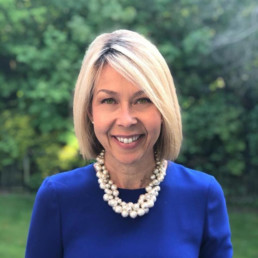
Written by Laura Ciftci
Head of School, NET Academies Trust, #BigLeadershipAdventure participant.
As a rookie member of Big Education’s ground-breaking leadership programme – Big Leadership Adventure – I have been exposed to a wealth and breadth of experiences, key-note speakers, ideas, design-thinking, innovation and new ways of leading. All with the key purpose to ‘develop the mindsets, competencies and behaviours required to innovate in education’.
More recently, we experienced a headline module on diversity, equity and inclusion. Hannah and Adrian McLean, our guides for this module, did not pull any punches and stated from the outset that this session was going to be challenging and would possibly make many members feel rather uncomfortable. Nevertheless, they both insisted, education – especially educational leadership – needs ‘to start getting comfortable with being uncomfortable’. In truth, I found the whole process immensely challenging, both professionally and personally.
In hindsight, the module’s real impact was to champion our cohort into action – real action – with a determination to transfer theory and rhetoric into practice. This rallying cry to alms for all leaders was a clear message on the importance of producing and utilising a diversity, equity and inclusion strategy within our schools. Moreover, instigating conversations that would raise further questions around how we need to rethink teaching practices and policies in an age of multiculturalism. Otherwise, how else would we be able to educate our children to address the many disparities and inequalities within our society?
To Allyship or not to Allyship…? That IS the question:
One such practice and commitment centred round ‘allyship’; more specifically an expectation for all Big Leadership Adventurers to acknowledge and engage with the ‘allyship continuum’: from apathetic, to aware, to active and finally onto the desired goal – to be an advocate for diversity, equity and inclusion. An advocate of diversity, equity and inclusion would actively highlight and raise questions about situations, events, meetings, settings, organisations, senior leadership teams, subject leaders and headteachers, whereby the representation or membership did not reflect the cohort or group they were leading. What struck me as the most poignant part of the whole ‘allyship process’, was a genuine recognition from all the leaders in our cohort, that their journey along the allyship continuum would be a deeply, individual and personal journey.
Moreover, I realised, as I listened to the many painful and explicit narratives of prejudice and racism experienced by my colleagues – as infants, school children and adolescents and now as adults – that my journey to where I am today, had been an infinitely easier one, beyond my ‘disadvantaged’ label. If anything this made my purpose clearer – I wanted to celebrate and showcase our school’s rich diversity, to ensure that we authentically challenged institutional racism and other forms of discrimination. Subsequently, in order to kick start our school’s journey to allyship, we drafted a whole school strategic approach to diversity, equity and inclusion, that embraced the voice of our staff, pupils and wider community. Almost instantly, staff recognised that this commitment would take us beyond diversity, equity and inclusion, but further into social action; the co-dependence of societal changes through a strong, ‘lived’ diversity, equity and inclusion strategy. A focussed strategy, with professional training from the charismatic and knowledgeable Angela Browne helped us to explicitly outline expectations for the culture and climate of our school; facilitating classroom learning to connect with the experiences, histories and resources that every pupil brings to their classroom. Imagine a whole literacy spine that included the cultures, experiences and backgrounds of the pupils they sought to teach! Whilst this process may be in its infancy, we are rightly proud of its authentic germination …
Why here? Why now?
As I reflected further upon the intensity of that diversity, equity and inclusion module, it became apparent we were really being asked to champion a social conscience and critical pedagogy for our future pupils, leaders, work force, politicians and so on. Recognising that pupils and staff need to feel safe, valued, listened to and genuinely appreciated for who they are, rather than complying to a given, predetermined expectation. This sense of belonging, coupled with the freedom and encouragement to determine and discover who they are, would help our pupils to realise that the education system does not define them. Once equipped with the necessary skills, knowledge and beliefs, from diverse and inclusive school communities, they will have the freedom to construct their own unique futures for themselves. Armed with a broad skills base, resilience, acceptance (rather than tolerance, thank you Adrian Mclean for assisting me with the semantics), a good work ethic, humility and an acute awareness of social justice, our pupils and staff will in turn, readily challenge cultural, social and economic biases, that alas, are still systemic within society today. Never has the time been more right to challenge social inequality and to encourage pupils (and staff) to take positive and constructive action under the cultural umbrella of diversity, equity and inclusion.
Hope for the future…
Clearly, the education system is neither perfect nor paradise; quite the contrary in fact. Nevertheless, the system with all its limitations, remains a location of potential, hope and possibility. In that field of possibility, we have the opportunity to work towards diversity, equity and inclusion for our pupils, staff and wider community members. Likewise, to demand of ourselves and those in our charge, ‘an openness of mind and heart that allows us to face reality even as we collectively imagine ways to move beyond boundaries, to transgress. This is education as the practice of freedom’. (Bell Hooks)
And finally…
As our second day of diversity, equity and inclusion module concluded, I felt a deep kinship and professional respect for my fellow ‘Adventurers’. This diverse group of authentic professionals, had challenged me, and in and through that challenge, had allowed me a space of radical openness where I now felt able to authentically support diversity, equity and inclusion, within my own setting. This promising start would, I hope, encourage those in my charge, to learn and grow without limits. This gift of ‘freedom’ for our children today, now seems totally achievable.
A Curriculum for Diversity and Inclusion
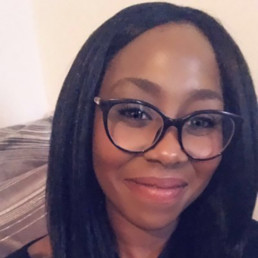
Written by Andrea Silvain
Andrea Silvain and Sarah Seleznyov are co-headteachers of School 360, a brand new primary school in Newham that is part of Big Education.
What if you could tear up your curriculum and start again? What if you could design a curriculum from scratch that had inclusion and diversity at its heart?
As Co-Headteachers of a brand new school, School 360, we are lucky enough to have this opportunity but we have to admit, it has been a complex and challenging process. We don’t think we have all the answers, but we do hope we are asking the right questions.
Question number one: What do we each bring to the table, both in terms of experiences and biases?
We come from two very different backgrounds. Sarah was brought up in a tiny village in Wales, went to a very ordinary comprehensive school, and then ended up as a fish out of water at Oxford University. She is passionate about breaking the cycle of elitism and sees education as a way to empower disadvantaged communities, and to enable social change. Andi was born in Newham and raised in East London. She faced a number of challenges to achieve academic success in an education system that was not designed for her to do so. She has a vision for an education system that is equitable. One that recognises, values and rewards students as multifaceted human beings.
As Co-heads we do what it takes to ensure that our vision is clearly understood and shared between us. We openly acknowledge and respect that we approach issues from different life experiences and will therefore have different perspectives and different levels of objectivity. However, one thing is clear to both of us: we want to make anti-racism a priority, and set it at the heart of the school’s mission. If it’s a half-hearted add on, it will fail.
Question number two: How can we avoid systematic bias in our recruitment of teachers and other staff?
Andi’s experiences as a black school leader and Sarah’s work on the Stepping Into Leadership project, have helped us reflect on how we can avoid bias in our recruitment and promotion processes. We are currently recruiting for a teacher and have taken steps to ensure our job advert encourages diverse applications, by including a specific statement of intent to welcome applications from black and minority ethnic applicants, and those seeking job shares. We want to listen and find out what a safe and welcoming environment feels like for black and minority ethnic teaching and support staff. We are considering a stage in the interview process that looks at commitment to antiracism, equity and inclusion. We have noted that eyes tend to focus on the name of the university that an application attended, and feel this may be limiting our openness to good candidates, so are keen on university-blind applications.
Finally, we are keen to have our application process critiqued by a wider group of teachers in the black and minority ethnic community once it has been put in motion, to see if we succeeded in our goal to be inclusive, and to generate ideas on what more could be done. But the work won’t end at recruitment. We know that bias demonstrates itself in progression to leadership, since school leaders often rely on the ‘tap on the shoulder’ approach, nudging people they recognise and can relate to, into leadership roles. We know we need to keep this in check and plan to offer training for staff on recognising and avoiding bias, and how to have proactive discussions about race.
Question number two: How can we avoid systematic bias in our relationships with families?
Step one for us with this goal is to create an action plan with short, medium and long term goals for becoming an anti-racist school, like the one being developed with the School 21 team. As Big Education grows the number of schools in its family, this work should really expand to a working group across the Trust, ensuring the schools learn from each other and can hold each other to account for progress and setbacks.
As we take in our first cohort of children, we plan to survey parents to understand the experiences they have had so far with schooling either for themselves or their children. Once we know about what brought them joy, the challenges they faced and what supported them in moving into successful adult lives, we can develop a curriculum that supports them and their children in moving forwards.
We have a purpose built parent room and community kitchen in the new school, and are carefully considering how we might use this space to promote social cohesion, changing the narratives of class and race and individual potential and thereby truly enabling our students’ futures. We are exploring the possibility of a Community Cafe: a place at the heart of the school creating a heart for the community, a place to both meet the needs and realise the gifts of the community.
Whatever happens in that space, and in our wider work with parents, we need to operate on the principle of mutuality. The name School 360 captures our intent to be at the heart of the community, both inward and outward facing, both offering and receiving from the community. We are keen to engage parents and community partners in all aspects of the curriculum. Local residents could host a talk, lead a course or put on a special event. We have as much to learn from the community as we are able to offer them.
Question number three: How can we make sure every child feels equally valued and included?
Andi watched this Ted Talk by author Chimamanda Ngozi Adichie and she was struck by how much it resonated with her own philosophy about storytelling. Chimamanda speaks about stories as the connection between humans as equals, which is at the heart of humanity. She sees the dominant story being told as a manifestation of power, and articulates the danger of only hearing a single story.
As one a family of schools focused on oracy, School 360 wants to place a particular emphasis on storytelling. We want our curriculum to ensure that children’s home cultures are integrated with school culture and for children to develop empathy and understanding of different cultures. This will be deliberate through the books we choose, the representations we share, the pride we instil and the stories we share. Storytelling as a pedagogy will help facilitate this, as children are supported to explore, articulate and share their own stories with the passion and enthusiasm these stories deserve. Inspired by the award winning Ancestors Unknown project for secondary schools, we want children and families’ stories to sit at the heart of our curriculum.
School 360 children are the decision makers of the future. We want the education we provide to be transformational in a positive and long lasting way. We need the right team to bring this vision to life, and that team has to represent the community we serve. It’s a project in process, but watch this space – School 360 has grand and important plans!
To find out more about the new school, join one of our New School, New Thinking sessions, sign up for our newsletter, respond to our consultation, or apply to teach at the school.


